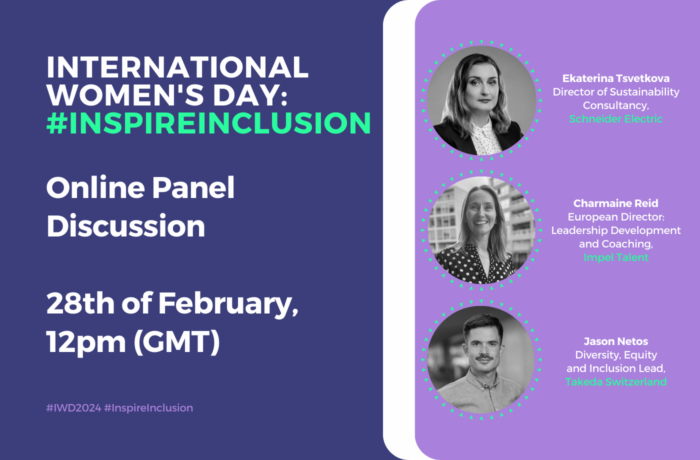As a business leader, your success is partially determined by your ability to attract and land the top Senior Executive talent. This is especially true within the regulatory affairs sector. Regardless of what employment statistics tell us or what economic factors and trends we experience, the bottom line is that there is an ongoing and never-relenting challenge for CEO’s, VPs, Directors and Managers.
This is to make a conscious effort to evaluate and improve their approach to attracting and securing the best Senior Executives. Otherwise the business suffers from lack of continuity, inability to grow and also the time and money wasted on not finding or hiring appropriate candidates.
This article will share some effective techniques and best practices to ensure you have a comprehensive and robust strategy to Win the War for Senior Executives so your businesses prospers.

1/ You Snooze, You Lose
Recruitment can be a slow process for all parties. From getting approval to hire, writing a job description, advertising the vacancy or engaging head-hunters, reviewing candidate CVs and interviewing candidates…you know the drill. With so many plates spinning at any one time, it’s inevitable that occasionally, momentum can stall and what you thought would only take a few weeks ends up taking numerous months.
We see and hear it all the time: employers (with the best of intentions) missing out on their preferred candidate because they took too long with the process. Sometimes they are tardy in making an offer so, in the meantime, that candidate has found another position with a company that moved faster to secure them. Now, we’re not suggesting you loosen your recruitment process to accommodate candidates you really like. It’s important to have some formal structure when managing what can be an overwhelming number of tasks, paperwork, people and diaries. That said, it’s just as important to recognise that when the right candidate has come along, you really do need to act fast!
This can simply mean letting them know that you felt it was a positive meeting . You can then outline the next step to keep the candidate motivated and in the loop. Provided it’s not financial pressure driving their job search, a good candidate, excited about a job opportunity, will wait a few weeks while you go through the process: chase feedback from line managers, conduct interviews with other candidates, check references, take annual leave and so on. Communication is important and can reduce stress, develop relationships and set minds at rest. It’s important to keep preferred candidates warm.
Managing the expectations is central to a smooth recruitment process. While this may be common sense, you’d be surprised at just how many employers let this simple element of the recruitment process slip when they’re in the eye of the storm. It’s a small thing but it goes a long way to secure the people you really want and need.
If, however, from a candidate’s perspective, the world goes quiet for two weeks and they hear nothing , what is going on in their heads? They’ll think you’re a disjointed company that doesn’t value their time, nor care very much for what they can offer. They’ll happily move on while carrying that negative opinion of your company with them throughout their professional life, sharing their experience with others as they see fit.
If you find a good candidate, and you like them, tell them. Then speed up the remainder of your recruitment process to show them that you're serious. A slow recruitment process makes your organisation look slow, indecisive, rigid, and anything but agile and entrepreneurial. Act fast. Hire fast. And at the very least, communicate promptly to manage the candidate's expectations and keep them informed. It's a simple approach but is often overlooked, so make it part of your hiring strategy from now on.
2/ Compensation Packages
Organisations are keen to hire and retain top talent to help them grow , and candidates are more confident about moving jobs to progress their career. Yes, employers may have the upper hand for a while as the pandemic continues and the economic uncertainty prevails but there are some significant buts. Candidates are not shy to communicate their experiences with your company , especially if they are negative. Social media is exactly the right medium upon which to vent your spleen if a candidate is treated badly. This can cost you in terms of reputation and make others less keen to apply to work with you.
Benchmarks
It is a good idea to benchmark the package you should offer from those in the know. This could include friendly contacts working within competitors, consultants, clients, your HR team, job advertisements and of course good search partners. Do not rely on internal benchmarks of people who have been with your business for a long period. People who stay within one company for a long stretch are usually underpaid and you will not be able to recruit an external candidate for the equivalent of their salary . Equally do not base your assumptions of what a role should pay or how much you were paid if you were in that role earlier in your career, you may be surprised how much salaries and packages have moved on.
Incentives
Be prepared to offer a financial incentive for candidates to move on from their current role.
Flexibility
People have different financial motivations and their motivations change at different stages of their career. Therefore, flexible compensation arrangements will appeal to different types of candidates. Candidates earlier in their career may be highly focused on the guaranteed compensation for mortgage reasons, whereas a candidate later in their career may be more motivated by flexible working and flexible hours to achieve a great work/life balance.
Alternatives
If you can’t compete with your competitors on salary you will need to be creative. Options include: bringing someone in from the same function but from another industry sector (that doesn’t pay as well as your sector) or recruiting someone at the level below who can step up to the role. Either of these scenarios is likely to require greater support in their induction and you should expect a longer learning curve.

3/ The Interview Process
Deciding who will interview and be involved at each stage is important. If there are two interviewers at each stage look to ensure they complement one another, for example an enthusiastic, verbose character coupled with a more detail focused colleague. You need to strike a balance between assessing the candidate, taking good notes and marketing your business and the role to the candidate.
Preparation is key!
Read the candidate’s CV and the invaluable candidate summary report your search partner will have provided if you have engaged one. Know what is important to the candidate, their aspirations, and why they are interviewing with you. Use this to share relevant personal experiences and tailor the conversations to the candidate, rather than conducting a complete cookie cutter interview. An element of standardisation needs to be present within your interview structure to ensure fairness and consistency, but don’t be afraid to explore each candidate’s uniqueness.
Interview Format
Remember that interviewing is a two-way street, since the best candidates have options, they’ll interview and evaluate employers at the same time. Employers who assume that the assessment process only goes one way and forget to care about how they’re coming across to candidates – or neglect to give candidates opportunities to ask rigorous questions and do their own evaluations – will generally turn off strong applicants. First interviews consisting entirely of generic competency-based interview questions can come across as stilted and can make it difficult to build rapport, as do panel interviews with three or more interviewers.
Put some thought to how many questions you ask and how you ask them, candidates giving feedback such as “I survived the onslaught” does not present the company or interviewers in the best possible light. It’s not a test in the formal sense but an exploration.
Greeting
How does your business really look to a first-time visitor? What does it say about your business? Candidates will draw impressions about your company as soon as they arrive . Maybe the greeting at the security gate and reception all help to form the first impression. Perhaps having an appropriate waiting space or an offer of refreshment. It is useful to brief reception/security staff on how to welcome candidates arriving for interview.
Be cohesive
If there are multiple interview stages ensure candidates don’t have to answer the same questions repeatedly. A little question overlap is fine, but constant repeat questioning is draining. Assign roles to the interviewers and map out who is going to ask what.
Ask questions
“Is there anything you didn’t get a chance to tell us today that you think we should know?” Even if they don’t get the job, this question lets candidates walk away feeling more satisfied because they know they gave it their all.
On feedback
Remember, the majority of people you interview won ‘t get the job, and that could translate into tens or hundreds of people a year. How you reject people will have a profound impact on your brand. When giving unsuccessful candidates negative feedback, it’s easy to say “You did well, but the job just wasn’t a fit.”
What’s much harder to say is, “There were concerns about your ability to collaborate based on XYZ reasons.” However, this is much more valuable to the candidate and being honest with them gives a positive experience to take away. As well as areas for them to develop or work on to perhaps reapply to you again in the future.
Be punctual
If you keep a candidate waiting twenty minutes beyond their scheduled interview time, they will draw a negative impression of you and your business before the interview even starts. If you are running late, make sure a colleague speaks to the candidate to apologise and let them know you will be with them soon. Better still, get a colleague to give the candidate a ten-minute brief on the role and the company while they wait.

4/ Job Description
The job description should be written in conjunction with the HR team, it should not be written by the HR team alone. It should include input from all the senior team involved in the interview process to agree the requirements in the person specification. For external facing roles you may wish to ask a selection of your clients or key stakeholders their opinions on the type of person they would prefer to work with.
Most senior level candidates are used to reading reports from McKinsey and BCG etc and to send them a l or 2 page job spec does not do you any favours. Part of what we do is to put together an attractive and compelling candidate prospectus (typically 10 pages long) that gives an insight to the business, the opportunity and the ability for this role to take another level. It is of course essential not to discriminate on grounds of gender, age , ethnicity, sexuality, disability, religion or beliefs, so avoid any inappropriate requirements, e.g. “must have x years’ experience” or words such as “mature”.
Avoid jargon
Such as “provide expert advice to the MPR board on the TCO and changes to the TOM”. This will not have the best people queuing around the block to join you. Exceptional candidates have options and will make a part judgement on the company culture based on the job description about whether they want to work with you.
Don’t over specify
Be realistic on the skills and experience that you are asking for in comparison with the role and the salary package on offer.
Prioritise
Ensure you split the person specification into both essential and desirable requirements. This helps to communicate to candidates whether they are the ideal fit without putting off less experienced candidates who would be capable of stepping up to the role.

5/ Use The Experts
The competition for the best Senior Executive talent is fierce, and the strongest candidates could be across town or across the globe. Recruitment professionals have the know-how, resources and time to help clients think in new ways about how to identify and recruit top talent. It is what they do: they know the business, and they should take the time to know your business .
There are several types of recruiters, and while the mechanics and psychology of recruiting are similar, the methods and service will vary tremendously:
Recruitment Agencies
Recruitment agencies don’t always have an exclusive relationship with the client, and they are operating on a contingency basis with a fee paid only if the company hires a candidate introduced by the agency. They will typically source candidates via their database or through job boards. They may phone screen candidates before recommending the best candidates to the client.
Retained Search
Retained Search is typically used and highly recommended for senior management positions (or for other scarce resource roles where a different method is required). The search firm is retained by the client usually on an exclusive arrangement. Normally, the fee is paid in three stages; a proportion of their fee upfront, a proportion on shortlist presentation and the balance paid when the search is complete. Search firms will:
- research an agreed market
- list of companies to identify potential target candidates,
- approach candidates briefing them on the role
- recommend a shortlist of candidates to the client
- they will also provide salary benchmarking advice
- help shape the job description that is required
You can use information from the search process that you included in the new brochure that you did. A key differentiator is they are finding and attracting the best candidates in the market (who are often not even considering a career move) rather than the best candidates on a database that are actively looking.

6/ Employment Brands
Take a look at your website, especially the “join us” section. If you don’t have a “join us”, it is advisable that you create one. Consider whether it just lists open positions with a quick paragraph on the history of your company or if it tells a compelling story of your organisation’s culture, your value proposition and what others who’ve joined your business have accomplished since joining? Although listing vacant positions seems logical, consider the opportunity of talking less about what you need in a new hire and more of what you offer to someone in their career.
- Consider sharing testimonials from other candidates or employees past and present.
- Share newsletters or quarterly updates with photos from events, industry awards and charitable initiatives.
- Take photos of the interactive events you host in your company – things such as bring your kids-to-work- day or group volunteer efforts or sports teams.
- Consider creating a video with clips from around the company and spotlight superstars. This can be an effective way to share your company with any prospect considering applying to your organisation.
Job adverts – Successful adverts sell first and screen second. Is the posting of a job description that includes specific requirements for the position like the type of degree someone needs, or the listing of soft skills that are desired, really what a prospect is looking for? Consider replacing that information with information that highlights the challenges or responsibilities and authority to be experienced by the individual who fulfils this role.

7/ Internal Referral
Take a look at your internal referral programme. With most internal programmes, success does not rely on the prize associated with the referral, but rather the consistent reminder that the programme exists. How frequently are awards distributed and how public is the announcement that hires were made due to a referral? Most employees do not refer friends and colleagues because of a cash reward, but due to a deeply rooted belief in the opportunity that exists for those friends and colleagues once they’ve joined the firm. Our competitors are also looking for top performers and as a result, candidates are spoilt for choice.








